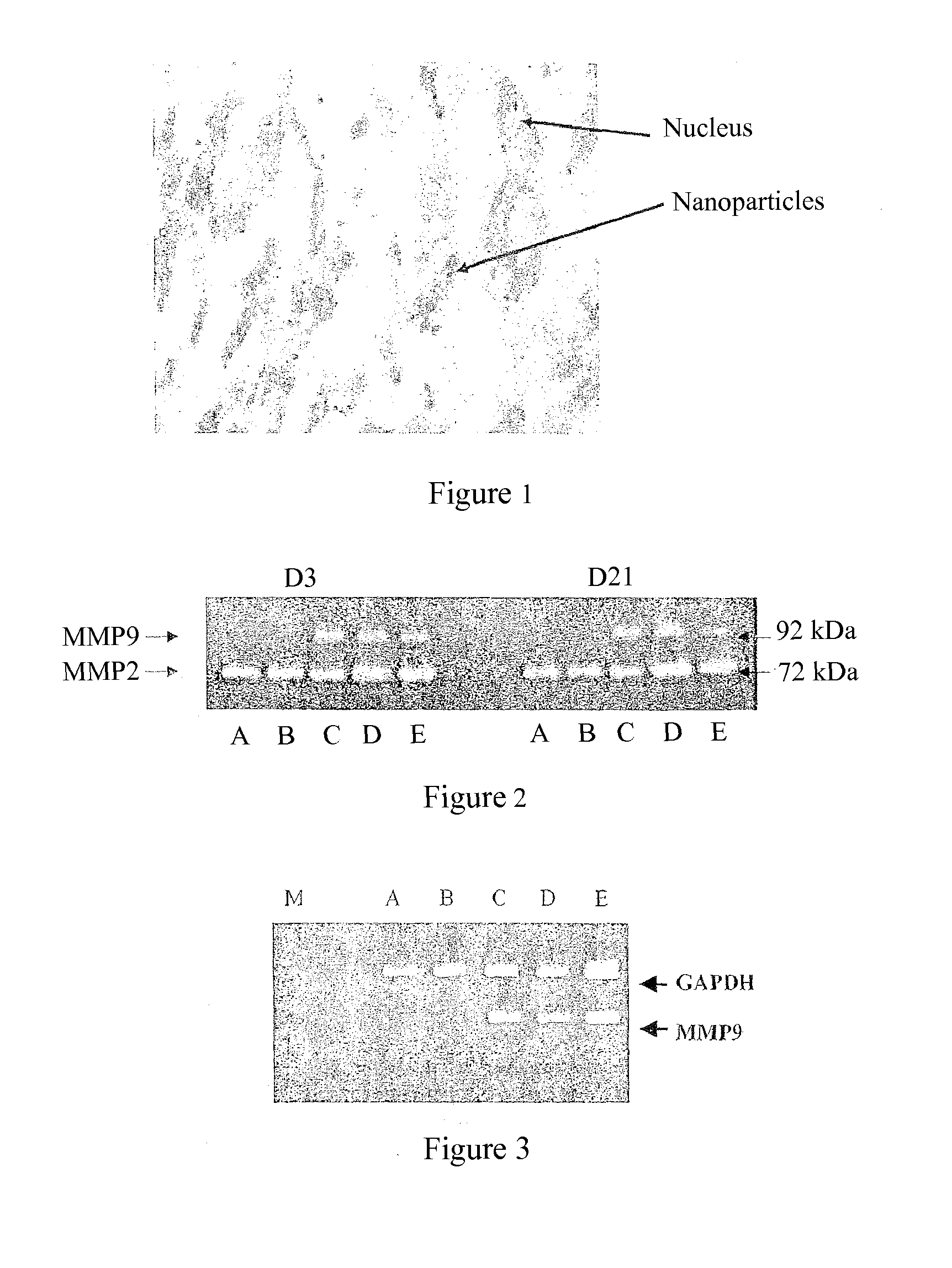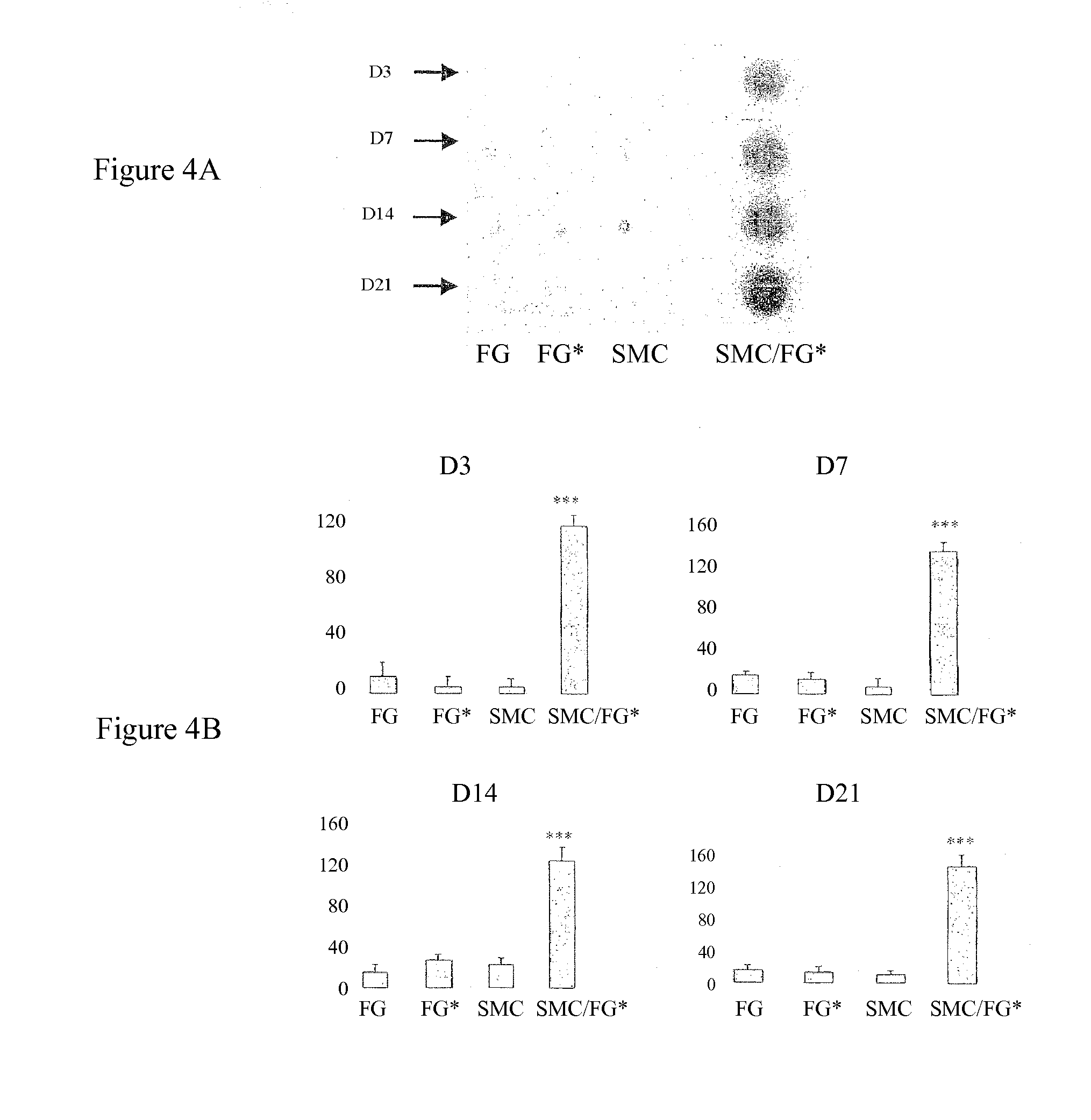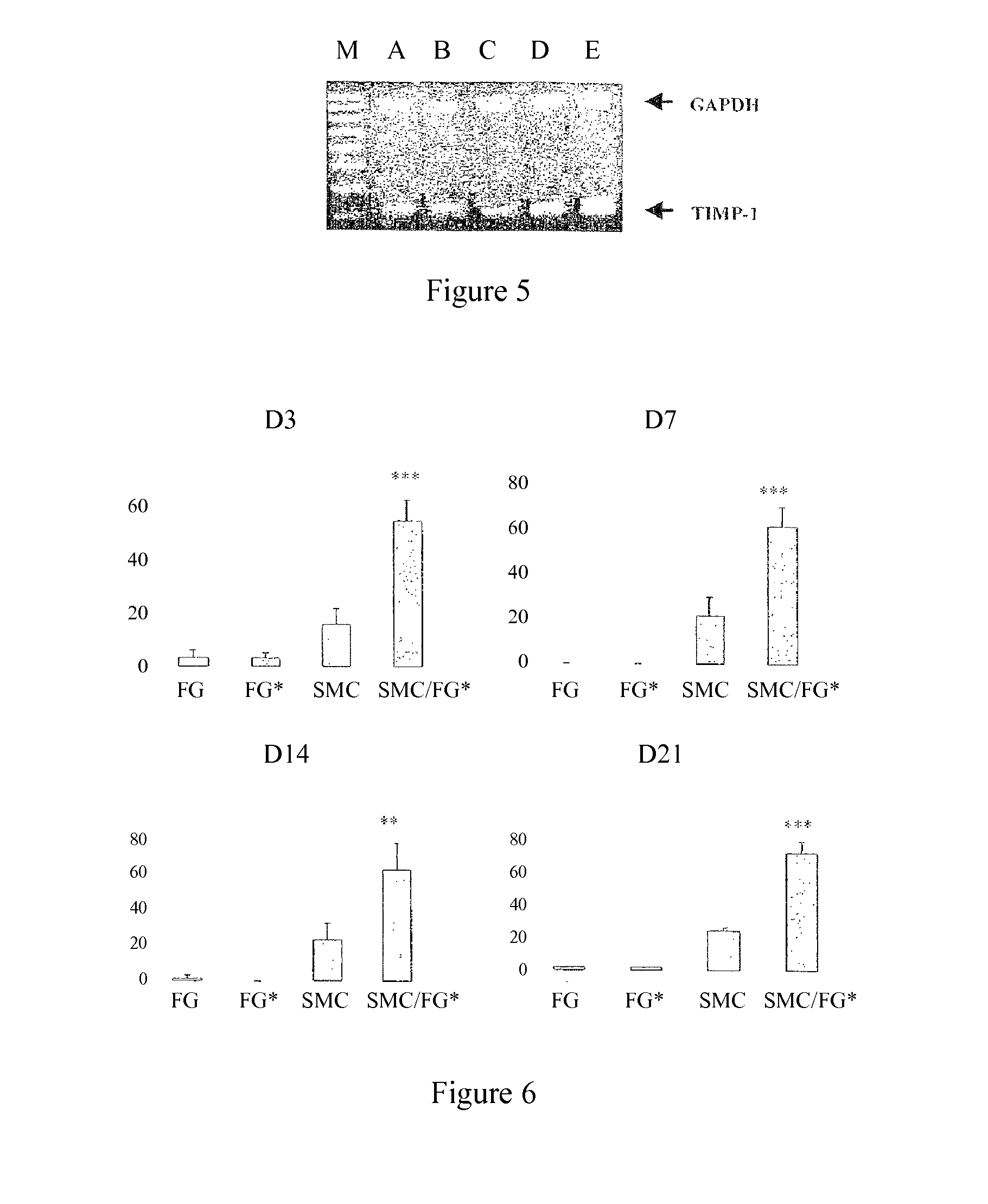Use of gingival fibroblasts for vascular cell therapy
a vascular cell and fibroblast technology, applied in the direction of biocide, drug composition, prosthesis, etc., can solve the problems of pathological arterial remodeling, imbalance between degradation and abnormal healing reaction
- Summary
- Abstract
- Description
- Claims
- Application Information
AI Technical Summary
Benefits of technology
Problems solved by technology
Method used
Image
Examples
example 1
Secretion of MMP2, MMP9, TIMP-1 and TGFβ in Cocultures of Gingival Fibroblasts and Smooth Muscle Cells
Labeling of Fibroblasts
[0051]The gingival fibroblasts are labeled with anionic nanoparticles of maghemite as described by WILHEM et al. (Biomaterials 24: 1001-1011, 2003).
[0052]The gingival fibroblasts (six different cultures) are cultured to confluence in 10% fetal calf serum (FCS); and, after 48 h, the culture supernatant is removed and the cells are cultured in serum-free medium.
[0053]The quality of gingival fibroblast labeling with these nanoparticles is controlled by Perl staining (Prussian blue). The nanoparticles are absorbed and internalized into the endosome of the gingival fibroblasts, as shown in FIG. 1.
[0054]In order to verify that the labeling does not modify the phenotype of the gingival fibroblasts, the effect of the incorporation of the nanoparticles on the secretion of matrix metalloproteinase-2 (MMP2) and of cytokines IL-1β and TGFβ was evaluated at D1, D3 and D5 (...
example 2
Comparison of the Effects of the Gingival Fibroblasts with Those of Dermal or Adventitial Fibroblasts on the MMP2 or MMP9 activity of SMCs
[0127]Cocultures of dermal fibroblasts (FDs) or adventitial fibroblasts (FAs) and of smooth muscle cells (SMCs) are carried out in a collagen gel, using the same protocol as that described in Example 1 above for the gingival fibroblasts.
[0128]The cells are obtained from skin samples for the dermal fibroblasts, from samples of adventitia for the adventitial fibroblasts, and from samples of arterial media for the smooth muscle cells.
[0129]Dermal or adventitial fibroblast cultures and smooth muscle cell cultures are carried out separately, as a control, under the same conditions.
[0130]The cell interactions are studied at D7 and D14 by determination of the activities of MMP2 and of MMP9, secreted into the culture medium, by zymography as described in Example 1 above. In parallel, 20 μl of recombinant MMP9 (R&D Systems, ref. 911-MP) are subjected to th...
example 3
Organotypic Cultures of Lesioned Arteries
[0140]The three-dimensional culture of lesioned arteries in collagen gel was developed by the inventors in order to provide a model for analyzing arterial remodeling over time.
Obtaining the Cultures
[0141]Atherosclerotic lesions are induced in 5 New Zealand white rabbits by means of the combination of air desiccation and a high-cholesterol diet, as described by LAFONT et al. (Circ. Res. 76(6): 996-1002, 1995; Circulation 100(10): 1109-1115, 1999). After 4 weeks, the presence of atherosclerotic lesions is confirmed by arteriography inside the two femoral arteries. Iatrogenic lesions are then produced on the left femoral arteries using an angioplasty balloon catheter (3 insufflations at 6 atm for 60 sec).
[0142]hours after the angioplasty, the rabbits are sacrificed by intracardiac injection of Phenobarbital. The arteries are collected after dissection and stored in DMEM containing 20% FCS, at 4° C., for 3-10 hours, before placing in culture. In ...
PUM
 Login to View More
Login to View More Abstract
Description
Claims
Application Information
 Login to View More
Login to View More - R&D
- Intellectual Property
- Life Sciences
- Materials
- Tech Scout
- Unparalleled Data Quality
- Higher Quality Content
- 60% Fewer Hallucinations
Browse by: Latest US Patents, China's latest patents, Technical Efficacy Thesaurus, Application Domain, Technology Topic, Popular Technical Reports.
© 2025 PatSnap. All rights reserved.Legal|Privacy policy|Modern Slavery Act Transparency Statement|Sitemap|About US| Contact US: help@patsnap.com



